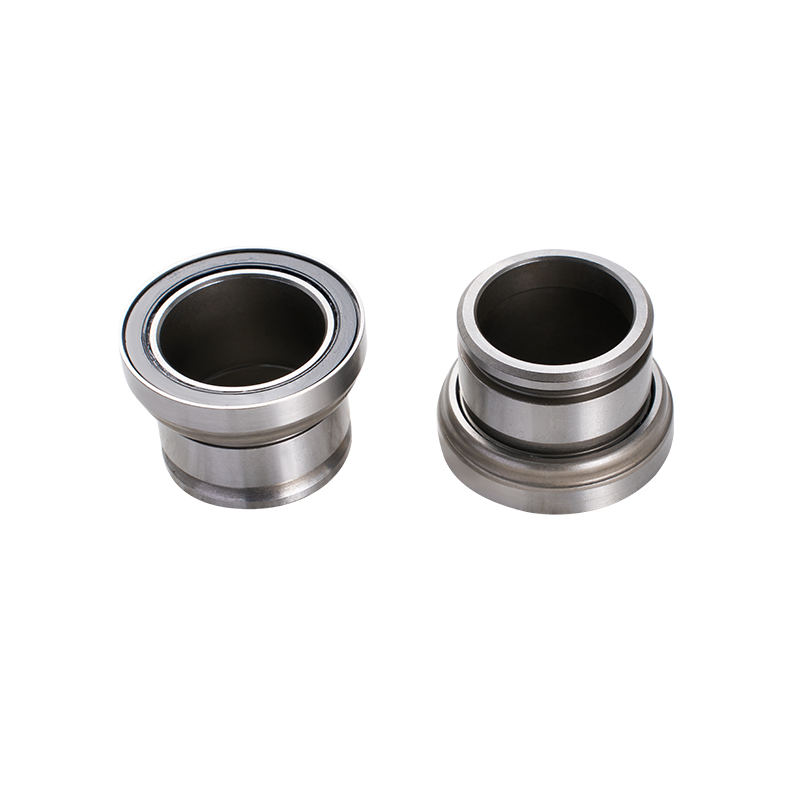Your vehicle's clutch system works tirelessly to ensure smooth gear shifts, but one often-overlooked component—the car release bearing—can silently fail with costly consequences. Unlike sudden breakdowns from a failed car clutch bearing, release bearing issues develop gradually, presenting subtle warning signs most drivers miss until it's too late. Recognizing these hidden symptoms early can save you from expensive clutch bearing assembly repairs down the road.

1. Intermittent Squealing Noises
One of the earliest signs of a failing car release bearing is a high-pitched chirping or squealing noise when depressing the clutch pedal. Unlike consistent belt squeals, this sound often disappears when the pedal is released. The noise occurs because worn bearings lose lubrication, causing metal-on-metal friction. Ignoring this symptom accelerates wear across the entire clutch bearing assembly, potentially damaging the pressure plate and flywheel.
2. Pedal Feedback Changes
A healthy car clutch bearing operates smoothly, but as the release bearing deteriorates, drivers often report unusual vibrations through the clutch pedal. This shuddering sensation indicates the bearing races are pitted or damaged, creating uneven rotation. Left unchecked, these vibrations transfer stress to other clutch bearing assembly components, cause premature failure.
3. Inconsistent Clutch Engagement
When a car release bearing begins to fail, you might notice the clutch grabbing at different points in pedal travel. This inconsistency stems from the bearing's inability to maintain proper alignment with the pressure plate fingers. Unlike a worn car clutch bearing, which typically causes slippage, release bearing issues manifest as erratic engagement—a telltale sign the entire clutch bearing assembly needs inspection.
4. Increased Pedal Effort
Many drivers mistake a stiff clutch pedal for cable or hydraulic issues, but a failing car release bearing frequently causes this symptom. As bearing surfaces degrade, friction increases, requiring more force to disengage the clutch. This added strain impacts the clutch bearing assembly's diaphragm spring, potentially warping pressure plate components if unaddressed.
5. Bearing Rumble at Idle
A little-known indicator of car release bearing failure is a low rumbling noise that disappears when the clutch pedal is pressed. This occurs because the bearing only engages when the pedal is released. Unlike a failing car clutch bearing, which typically makes constant noise, this on/off rumble specifically points to release bearing wear within the clutch bearing assembly.
Why Timely Replacement Matters
Procrastinating car release bearing replacement risks collateral damage:
- Worn bearings can disintegrate, sending metal fragments through the clutch bearing assembly
- Excessive heat from friction warps pressure plates
- Complete failure strands vehicles in gear
Modern car clutch bearing systems often integrate the release bearing into a single clutch bearing assembly, meaning replacement requires disassembling the transmission—a labor-intensive repair averaging 4-8 hours of shop time.
Prevention Tips
Extend your car release bearing lifespan by:
- Avoiding riding the clutch pedal
- Addressing fluid leaks that contaminate bearings
- Replacing the entire clutch bearing assembly during clutch jobs
- Using OEM-quality components rather than cheap alternatives
Remember: In clutch systems, the bearing you don't see (the release bearing) often fails before the one you do (the car clutch bearing). Stay alert to these subtle warnings, and your transmission will thank you.



 English
English русский
русский
